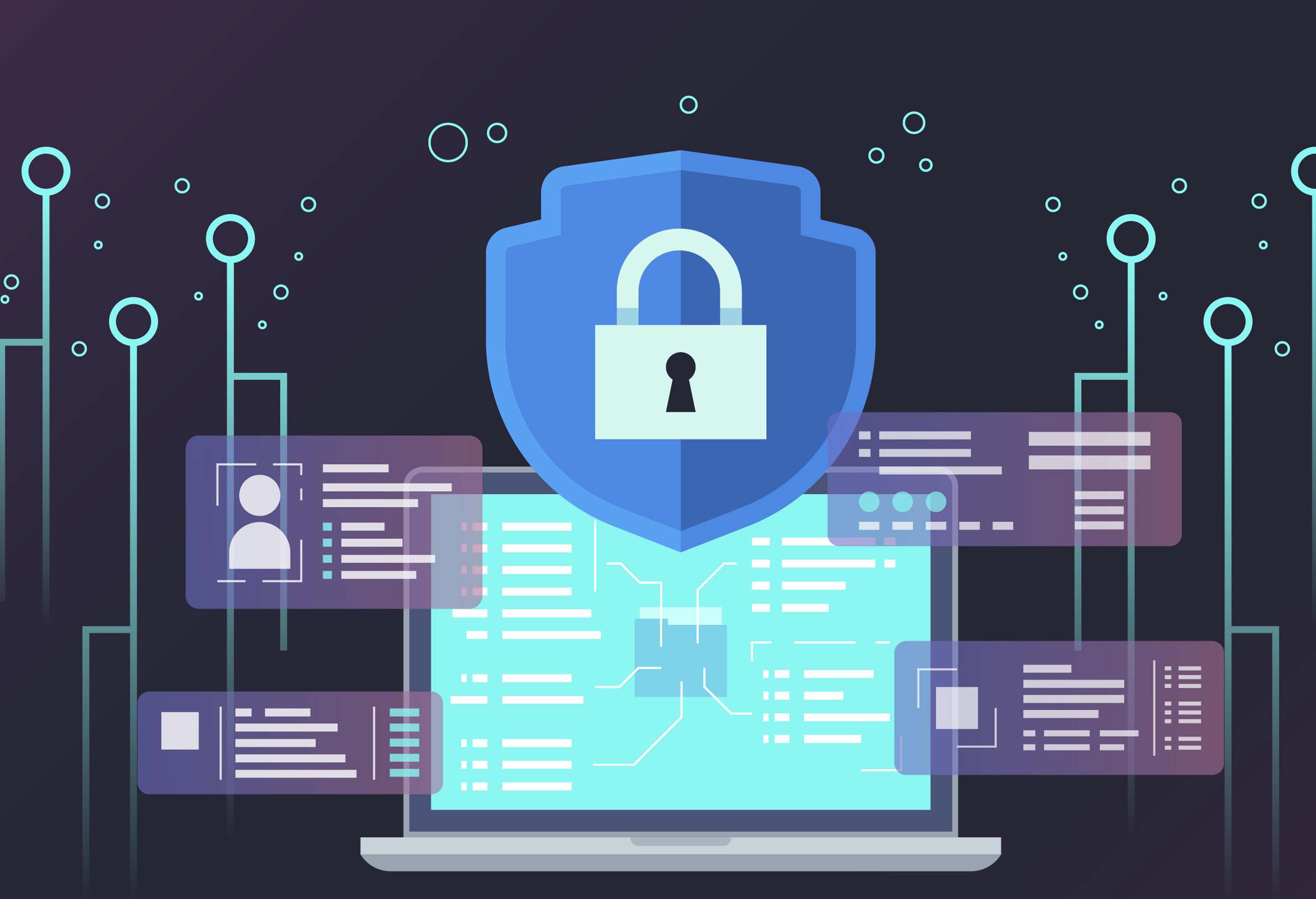
by Rebeca | Jul 19, 2023 | cybersecurity, News, Resources
Staying ahead of cyber threats while meeting compliance requirements is an ongoing challenge. With the surge in digital services, the need for efficient and secure user access management has become paramount. This is where Identity Governance Administration (IGA) comes into play, offering a powerful solution that helps financial institutions strike a balance between enhancing customer experience and safeguarding their sensitive data.
IGA’s place in banking and financial services
In the financial services sector, where customer trust is of utmost importance, securing sensitive financial data is a top priority. IGA offers a comprehensive approach to identity and access management, streamlining the provisioning and deprovisioning of user access to critical systems, applications, and data repositories.
Seamless access provisioning required
With the ever-increasing demand for digital financial services, customers expect seamless access to their accounts and transactions across multiple devices. IGA facilitates rapid and secure user provisioning, ensuring that employees, partners, and customers are granted the right level of access based on their roles and responsibilities. This not only enhances user productivity but also reduces the risk of unauthorized access.
Mitigating fraud and cyber threats
The financial services sector is a prime target for cybercriminals aiming to exploit vulnerabilities in digital channels. IGA helps detect and prevent fraudulent activities by providing real-time visibility into user access and behavior. By promptly identifying suspicious access patterns, financial institutions can thwart potentially threats and safeguard their customers’ assets.
Ensuring regulatory compliance
As the financial industry faces increasingly stringent regulations, maintaining compliance has become a complex task. IGA offers a robust framework for managing user access in accordance with various regulatory requirements, such as GDPR, PCI DSS, and SOX. By automating access control and regularly auditing permissions, financial institutions can demonstrate compliance to auditors and regulatory bodies.
Enhancing operational efficiency
The financial sector strives to optimize back-office operations and embrace cloud-based services for agility. IGA aids in centralizing user access management across different systems and repositories, simplifying administrative tasks. This consolidation not only reduces operational costs but also improves overall efficiency.
Partnering with security experts
Navigating the ever-evolving landscape of cybersecurity requires the support of experienced partners. Implementing IGA is not just about deploying a technology solution; it’s about understanding the unique challenges faced by financial institutions and tailoring the IGA implementation accordingly. A trusted cybersecurity partner, like our company, brings valuable insights and best practices to ensure the maximum effectiveness of IGA in securing financial services.
If you need to protect your company to avoid future cyber attacks, Soffid has the solution. Shall we talk?
Image: freepik

by Rebeca | Aug 24, 2022 | cybersecurity, News, Resources
Personal data leaks have occurred to both large and small businesses. In addition, it happens very frequently, more and more in recent years.
Most of them are a consequence of cyber-attacks on networks or e-commerce security breaches. Incidents such as these can devastate a company.
Why do social networks allow data leaks?
Social media platforms are a primary security weak point for businesses due to data leaks. Social media is quickly turning into a primary security weak point. A single data breach within one of the social media networks can result in millions of records being stolen.
Social media is one area where security teams have faced a steep learning curve. Beyond the fact that through LinkedIn, Facebook and Twitter employees can connect with each other, social networks have another attraction for companies.
For example, to take advantage of social media platforms as tools to carry out brand recognition, customer service, advertising and recruitment processes. Yet every user on every platform presents a social media risk to security professionals. And the risks are many.
One of the most affected sectors during the pandemic was the health sector. Know the key points of healthcare cybersecurity.
Top areas for attention
- Account tracking
- Conduct regular security and privacy reviews
- Keep access up-to-date
- Use a Virtual Private Network
- Ensure adequate device protection
- Monitor your social media channels
- Employee training is crucial
- Beware of third-party apps
At the same time as the rapid growth of technology occurred, social networks increased in popularity. The fundamental reason for this is the ability of networks to connect people.
Because it provided an ideal platform to connect with your friends, family and colleagues. Since it provided an ideal platform to connect with your friends, family and colleagues.
The information shared in social network spreads fast, almost instantaneously. For that reason, it attractive for attackers to gain information.
The secrecy and security of social media platforms must be consulted from various positions. There are many security and privacy issues related to shared user information. Especially when a user uploads personal content like photos, videos, and audios.
Finally, the attacker can maliciously use shared information for illegitimate purposes. See how Soffid can help you stay ahead of the curve in a rapidly evolving digital world. Let’s talk?
Sources:
(1) techtarget.com
(2) https://link.springer.com/
(3) Forbes
Picture: Foto de redes sociales creado por rawpixel.com – www.freepik.es

by Rebeca | Jan 27, 2021 | soffid
Priviledge account management (PAM) is emerging as one of the hottest topics in cybersecurity — and it’s easy to understand why. Cybercriminals are relentless when it comes to finding and compromising their targets’ privileged credentials to gain unfettered access to critical assets. PAM also protect against administrative mistakes and if they do happen, it allows for the traceability of the person involved and to know the reason.
Chief information security officers (CISOs) have plenty of incentive to manage access to privileged accounts robustly and comprehensively. However, market drivers for PAM solutions go beyond the risk of financial consequences due to a breach.
Shockingly, 54 percent of companies today still use paper or Excel to manage privileged credentials. With no shortage of commercially available solutions on the market, why are so many businesses continuing to use manual processes?
Many vendors offer point solutions, such as password managers and session recorders, that only accomplish a portion of what is needed in (yet another) technology silo. Plus, more robust PAM solutions are often hard to deploy, unintuitive and not integrated with related critical technologies that enable security teams to manage privileged accounts holistically. Businesses looking to move beyond spreadsheets should consider new solutions to mitigate risks and gain a rapid return on investment.
Take Privileged Account Management to the Next Level with Soffid
PAM solutions help security teams to:
- Discover all instances of privileged user and application accounts across the enterprise.
- Establish custom workflows for obtaining privileged access.
- Securely store privileged credentials in a vault with check-in and check-out functionality.
- Automatically rotate passwords when needed — either after every use, at regular intervals or when employees leave the company.
- Record and monitor privileged session activity for audit and forensics.
- Receive out-of-the-box and custom reports on privileged activity.
- Enforce least privilege policies on endpoints.
By integrating a PAM solution with identity governance and administration (IGA) tools, security teams can unify processes for privileged and non privileged users. They can also ensure privileged users are granted appropriate access permissions based on similar users’ attributes (e.g., job role, department, etc.) and in accordance with the organization’s access policy. Events related to privileged access are sent to a security incident and event management (SIEM) platform to correlate alerts with other real-time threats, which helps analysts prioritize the riskiest incidents. Integration with user behavioral analytics (UBA) solutions, meanwhile, helps security teams identify behavioral anomalies, such as the issuance of a rarely used privilege.
By investing in PAM tools that integrate seamlessly into the existing environment, organizations can put the full power of the security immune system behind the ongoing effort to protect sensitive access credentials from increasingly sophisticated threat actors. This enables security teams to move beyond inefficient, manual processes and embrace a holistic approach to privileged account management.
Resources:
(1) Security Intelligence




